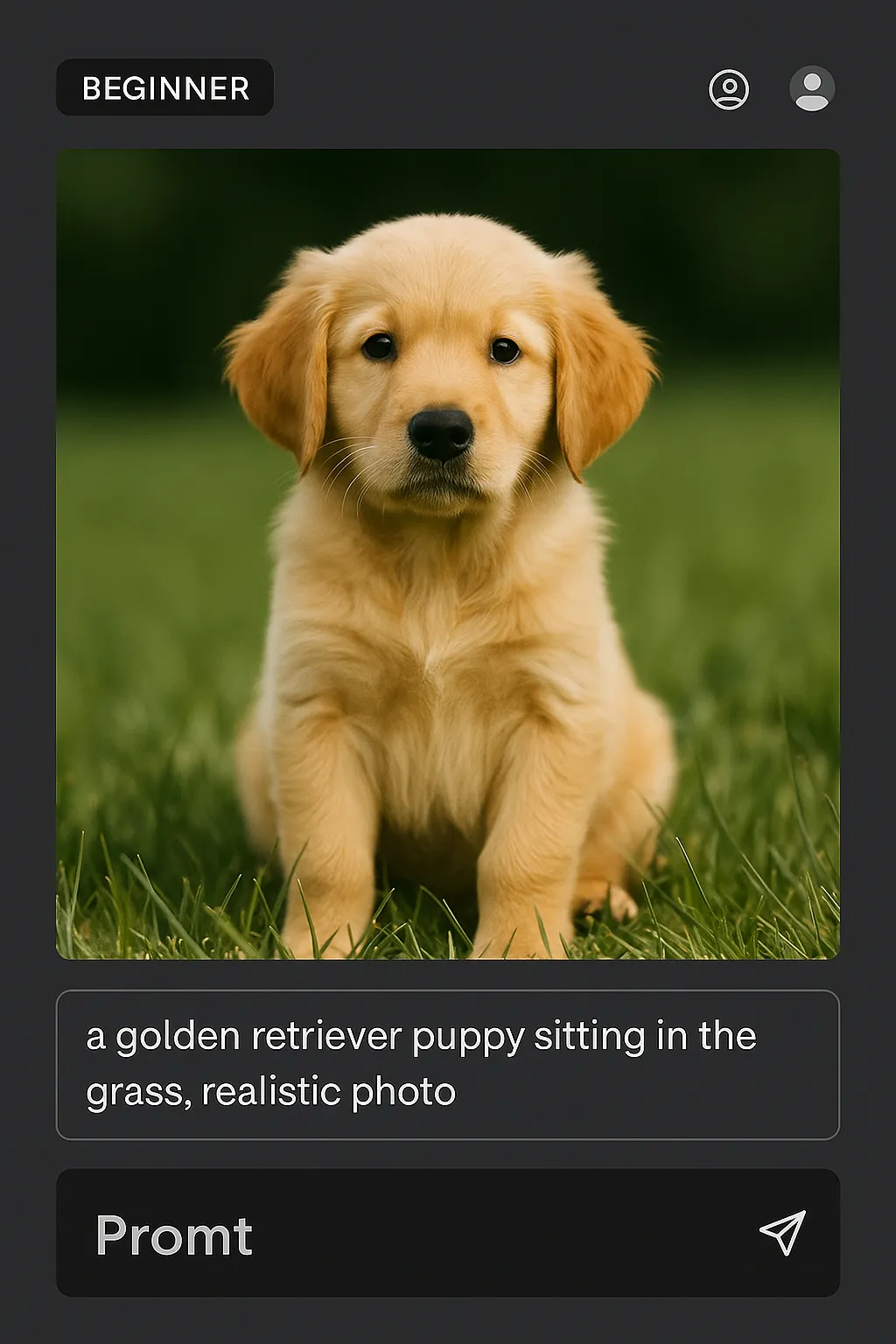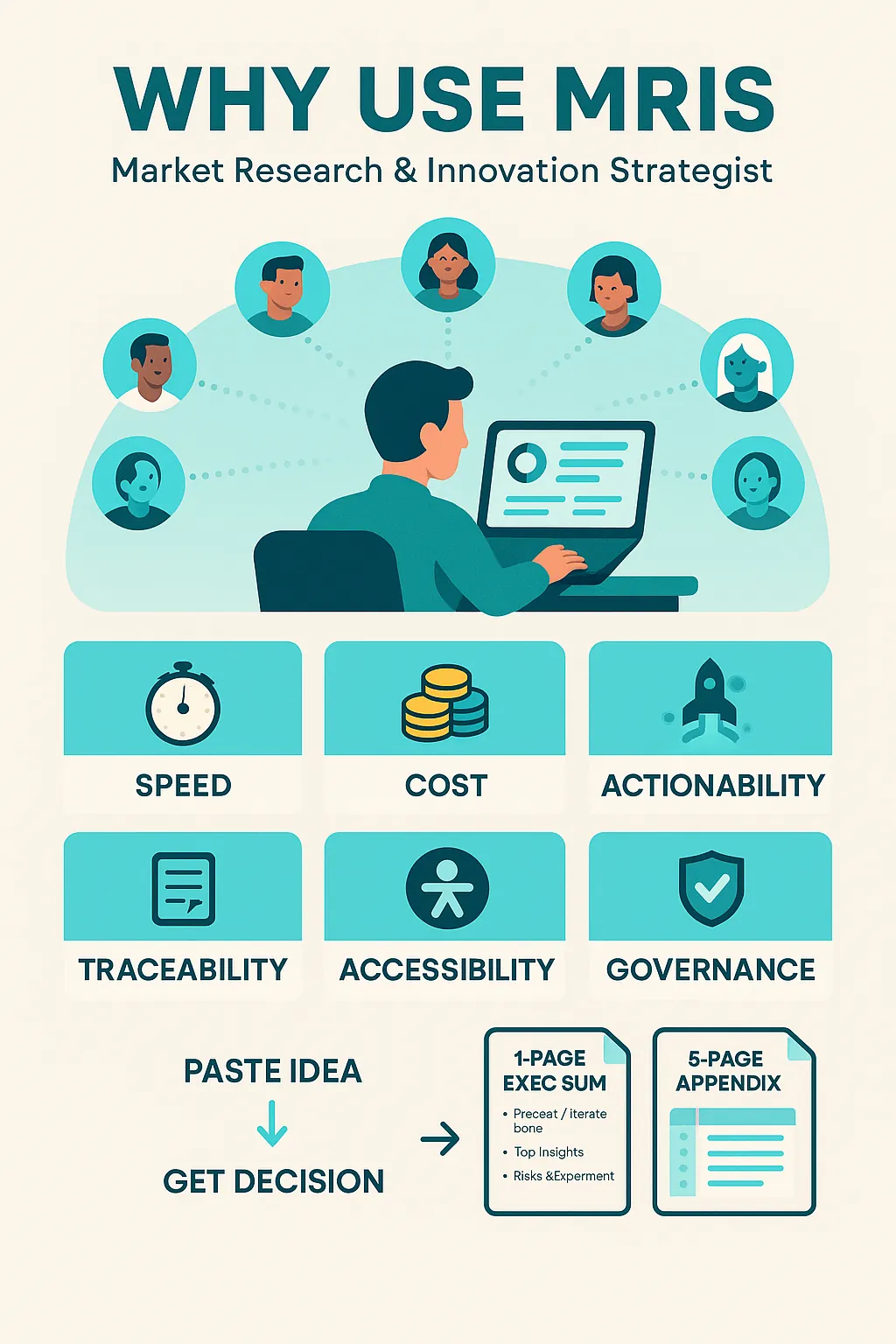How to Write Simple Prompts for ChatGPT Image Generation (Beginner’s Guide)

AI image generation feels like magic. You type a sentence, and seconds later, an image appears. But here’s the secret: the quality of your image depends on the quality of your prompt.
This beginner’s guide will show you how to write simple, effective prompts in ChatGPT for image generation — even if you’ve never done it before.
What Is a Prompt?
A prompt is just your instruction to the AI. Think of it like talking to a designer. If you say, “make me a picture,” you’ll get something random. But if you say, “a golden retriever puppy playing in the grass, photographed in the morning sunlight,” the designer knows exactly what to create.
The clearer your description, the better your result.
The Basics of Prompting
1. Be Clear
Instead of short, vague words, use complete phrases.
- ❌ “dog”
- ✅ “golden retriever puppy sitting in green grass”
2. Add Style
You can guide the “look” of the image with style words:
- “in a watercolor painting style”
- “as a flat vector icon”
- “as a realistic photograph”
3. Include Details
AI responds well to extra context. Add details like:
- Lighting (sunlight, neon glow, dramatic shadows)
- Background (beach, office, mountain range)
- Mood (happy, dark, playful, futuristic)
Beginner Prompt Examples
- “A realistic photo of a mountain landscape at sunrise, mist in the valley, warm golden light.”
- “A cartoon-style cat wearing a wizard hat, bright colors, playful mood.”
- “A flat vector icon of a coffee cup, minimalist style, clean background.”
Each of these goes beyond a single word and tells the AI what you actually want.
Pro Tip for Beginners
Start simple. Change one detail at a time to see how it affects the result. For example:
- Try the same subject as a sketch, a cartoon, a 3D render, and a photograph.
- Compare how adding “at night” vs “in daylight” changes the mood.
This playful experimentation is the fastest way to learn.
Common Beginner Mistakes
- Being too vague → prompts like “tree” or “person” give poor results.
- Overloading too soon → adding 20 details makes prompts confusing.
- Forgetting style → AI needs to know whether you want a photo, drawing, or painting.
Final Thoughts
Prompts don’t have to be complicated. At the beginner level, the goal is to be clear, descriptive, and add style words.
Start with a subject, add 1–2 details, then refine step by step.
Next step? Try moving from simple prompts to structured prompts with composition and perspective. That’s what we’ll cover in the Intermediate guide.
Have a question?
A prompt is simply your instruction to the AI. Think of it like giving directions to a designer — the clearer your description, the closer the image will match your vision. For example: “A golden retriever puppy playing in the grass, realistic photograph in morning sunlight.”
Start with a subject, add a style, and include 1–2 details. For example:
“A cartoon-style cat wearing a wizard hat, bright colours, playful mood.”
“A flat vector icon of a coffee cup, minimalist style, clean background.”
At the beginner level, focus on three things:
Clarity → use full phrases, not single words.
Style → photo, painting, vector, cartoon, etc.
Details → lighting, background, or mood to add richness.
Being too vague → prompts like “tree” or “person” give generic results.
Adding too much detail too soon → overloading with 20 modifiers confuses the AI.
Forgetting style → without it, the AI may default to random looks.
The fastest way to learn is playful experimentation. Start simple, then change one detail at a time — for example, try the same subject as a sketch, a 3D render, a photo, and a cartoon. Compare results with different moods like “daylight” vs “night”.
No. If you can describe what you want in plain English, you can generate images. The key is being clear and descriptive, not technical.




